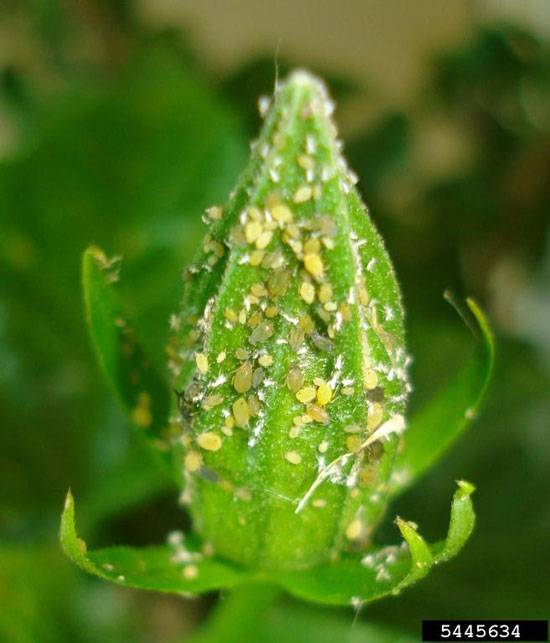Bhendi
Aphids

Aphids
Aphis gossypii

Aphids
Aphis gossypii
Aphids, sap-sucking insects, are notorious pests affecting numerous crops worldwide. Their damage is twofold: directly through feeding on plant sap and indirectly through the transmission of plant viruses, with over 50 known plant pathogenic viruses. Here’s a breakdown of their impact and characteristics:
Wide Host Range:
- Aphids feed on over 700 known host plants worldwide.
- They affect crops such as cucurbits, solanaceous vegetables, leafy greens, legumes, potatoes, ornamentals, stone fruits, oilseed rape, citrus, and cotton.
Direct Damage to Plants:
- Aphids, particularly species like Aphis gossypii, feed on the undersides of leaves and growing shoot tips.
- Their feeding causes chlorosis, premature leaf death, and leaf curling, reducing the plant’s ability to photosynthesize efficiently.
Honeydew and Sooty Mould:
- Aphids excrete honeydew, which leads to the growth of sooty moulds, further reducing the quality and quantity of produce.
Viral Disease Transmission:
- Aphids are vectors of over 50 plant viruses, making them dangerous even if their direct feeding damage seems minimal.
High Reproductive Potential:
- With short generation times and high fecundity, aphid populations can explode rapidly, making them difficult to control.
- Female aphids reproduce parthenogenetically (without mating), giving birth to live young (viviparous), and produce 70–80 offspring over a 15-day reproductive period.
Resistance to Insecticides:
- Aphids have developed resistance to various insecticide classes, including organochlorines, organophosphates, carbamates, pyrethroids, and neonicotinoids.
- This makes chemical control challenging and often ineffective.
Life Cycle and Development:
- Egg: Initially yellow, turning shiny black, laid on alternate host plants.
- Nymph: Tan, gray, or green nymphs, typically with dark markings, pass through a nymphal stage lasting around seven days.
- Adult: Wingless adults (1-2 mm) vary in color from light to dark green. Winged forms are smaller, with black head and thorax, and yellowish-green abdomen.
- Egg: Initially yellow, turning shiny black, laid on alternate host plants.
Optimal Environmental Conditions:
- The ideal temperature range for aphid development is 25–30°C with relative humidity of 65%–70%.
- Reproduction is optimal at 21–27°C, with females producing about 4.3 offspring per day.
Aphids, with their vast host range, high reproductive potential, and ability to transmit diseases, continue to be a major challenge for agriculture globally. Effective management requires integrated pest control strategies beyond just chemical treatments.
Blog
Explore Our Blog

